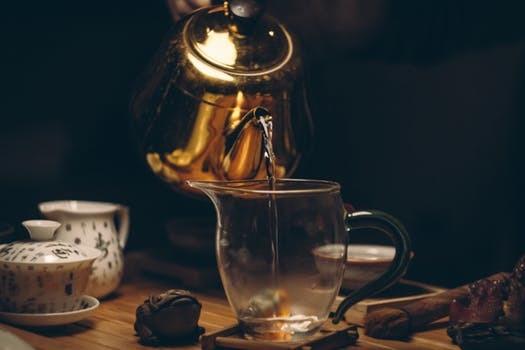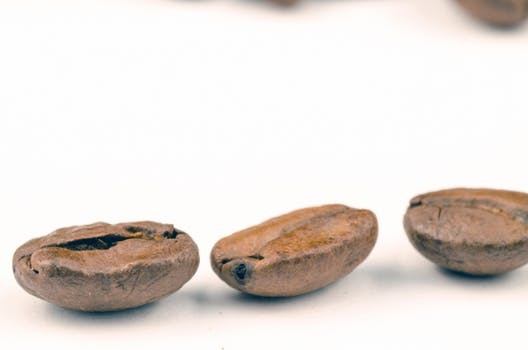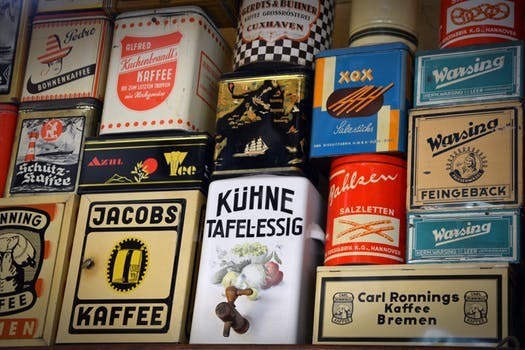Every beginner makes mistakes. It’s a fact of life.
You probably fell when you learned to ride a bike as a kid. Painters’ first attempts look more like blobs than masterpieces. Early drafts of novels are embarrassingly unreadable. Folks learning to speak a new language make cringe-worthy mistakes. And remember the disastrous blunders you made when you were learning how to drive? Yeah, not gonna go there.
But making mistakes is the only way you learn a new skill. As the old adage goes, “Practice makes perfect.” (Yes, I know it’s a cliché. But let’s face it. Most clichés are pretty much true.)
It’s exactly the same when you’re getting started making coffee at home. Unless you’re a “barista savant”, the odds of your getting it right the first time are slim to none.
Some factors in home coffee-making mistakes are beyond roaster’s control, like the design and airflow capacity of a roasting machine. Others can be controlled- like the time/temperature roasting profile and using a clean machine.
Making mistakes is part and parcel of learning. But many of the most frequent beginner home barista mistakes can be avoided. Here’s a list of 10 of the most common at-home coffee-making mistakes and how you can prevent them.
- Overloading the Roaster
Different roasters have different capacities, but it’s important not to overload it. Overloading your machine results in unevenly roasted beans, which lowers the quality of your coffee.
One common problem caused by overloading is “facing.” Facing occurs when the flat side of a bean sticks to the side of a roaster and gets charred. This gives your coffee an unpleasant burnt taste.
Check the capacity of your roasting machine and follow it carefully. By not overloading your roaster, you’ll get a good, even roast, which will yield an excellent cup of coffee.
- Roasting Defects
Mistakes in roasting often result in unfortunate defects that ruin the quality of coffee beans. Some of the most common defects include:
- Also referred to as “stalling,” baking results when the roasting temperature either drops or fails to rise. Baked coffee has a flat, dull taste, and can’t be detected by looking at the surface of the beans.
- Tipping happens when you introduce the beans to a roaster that is too hot, turning the beans’ tips black.
- Similar to tipping, scorching burns the coffee beans, creating a roasted, charred flavor.
- Simply put, you’ve roasted your beans for too long. The beans lose their acidity and your coffee comes out with a dull taste.
When roasting, keep a close eye on your beans. Check them frequently to make sure they’re not burning, and learn how to regulate the temperature of your roasting machine to ensure the proper heat.
- Using Low-Quality Water

According the Barista Institute, a cup of coffee consists of 98% water. It stands to reason, therefore, that the water you use to make your coffee should be of the best quality possible.
Tap water might be convenient, but it has adverse effects on the flavor of your coffee due to the large amounts of undesirable contaminants such as fluoride, chlorine, lead, and pesticides. Even if your local tap water is deemed suitable for drinking, it nonetheless diminishes the taste of your coffee with unpleasant odors from the water pipes that carry it to your faucet.
When making coffee, use fresh, cold water that’s been purified to remove all the nasty substances that negatively impact your cup. You can use water from a filter or from a bottle for best results.
- Using the Wrong Water-to-Coffee Ratio
The amount of water you use in your coffee has a powerful impact on its taste. Too little, it’s too weak. Too much, it’s too strong.
How strong or weak you like your coffee is a matter of personal taste. It’s also a matter of which brewing method you choose. However, as a general guideline, the National Coffee Association USA recommends the “Golden Ratio” of one to two tablespoons of ground coffee for every ounce of water. Of course, that’s just a guide; you can play with the coffee-to-water ratio to see what works for you.
- Buying Bad-Quality Beans
One of the most—if not the most—important details of making coffee at home is the quality of beans you use. For a terrific cup of coffee, it’s crucial to invest in high-quality beans.
Unfortunately, that means good coffee isn’t cheap. But it pays off in the long run for the value you’ll get. Before you buy, take some time to figure out your budget. And do your research. Whether you buy your coffee at a brick-and-mortar shop or online, find out as much as you can about your beans and how they’re produced.

- Using the Wrong Cup
Believe it or not, the type of cup you drink your coffee in makes a difference in the quality. A thick mug with solid walls holds the temperature longer than thinner ones. After all, who wants to drink room-temperature coffee?
That’s why a fine china teacup isn’t the best choice for drinking your coffee. Instead, find a sturdy ceramic mug like the kind you see in most diners. Also, avoid drinking from a cold mug. Warming your cup before pouring your coffee keeps it from getting too cold, too fast. Just fill your cup with some near-boiling water while your coffee is brewing, then tip it out before you pour.
- Failing to Clean the Roasting Machine
A dirty roaster is bad for your coffee and the machine. Over time, the oils in coffee build up a residue inside your roaster that results in bad smells and taste. Even worse, as the residue continues to build up, it clogs the filters and tubes inside the roaster, eventually causing it to break down. So now not only have you wasted your money by failing to take care of your roasting machine, you have to spend even more money replacing it. Not fun.
Don’t make this expensive mistake. Take the time to clean your roasting machine properly as well as your other coffee roasting tools. With only a short time investment, your home barista equipment will produce great coffee for a good long while.
- Making Your Coffee in the Wrong Place
Where you make your coffee is something to consider. Roasting coffee produces huge amounts of smoke, which can seep into other rooms in your house or apartment. So unless you have a well-ventilated indoor space, it’s better to roast outdoors. Though inconvenient in colder months, roasting coffee outside is a fantastic way to take advantage of warm spring and summer weather.
- Using Stale Coffee
The coffee you use should be as fresh as possible for the best cup. That’s why it’s essential to keep your roasted beans and grounds fresh for as long as possible.
As soon as coffee beans are roasted, they start to release carbon dioxide, which causes them to break down and become bitter. Roasted coffee beans retain their peak freshness for around 2-3 weeks, while ground coffee lasts around 1-2 weeks.
Use your roasted beans and coffee grounds as soon as possible to get the best level of freshness. The fresher your coffee is, the better it will taste. Which leads us to…
10. Improperly Storing Your Coffee

Properly storing your coffee makes a tremendous difference in the quality of your coffee. Keep it in an airtight container such as a mason jar or one made of stainless steel. This will prevent it from absorbing any bad odors in the air. Also, keep your coffee in a cool, dark place away from excess heat and natural light.
Making coffee at home is an art. And like all forms of art—visual, performing, culinary, and otherwise—perfecting it takes time, practice, and a lot of patience. Odds are you’ll make a mistake at some point, but it’s not the end of the world. With luck, the tips you’ve read here will help you deal with the most common at-home barista beginners’ mistakes.
How do you handle mistakes in making coffee at home? If you’re a seasoned at-home barista, do you have any advice for beginners? Tell us in the comments below!

